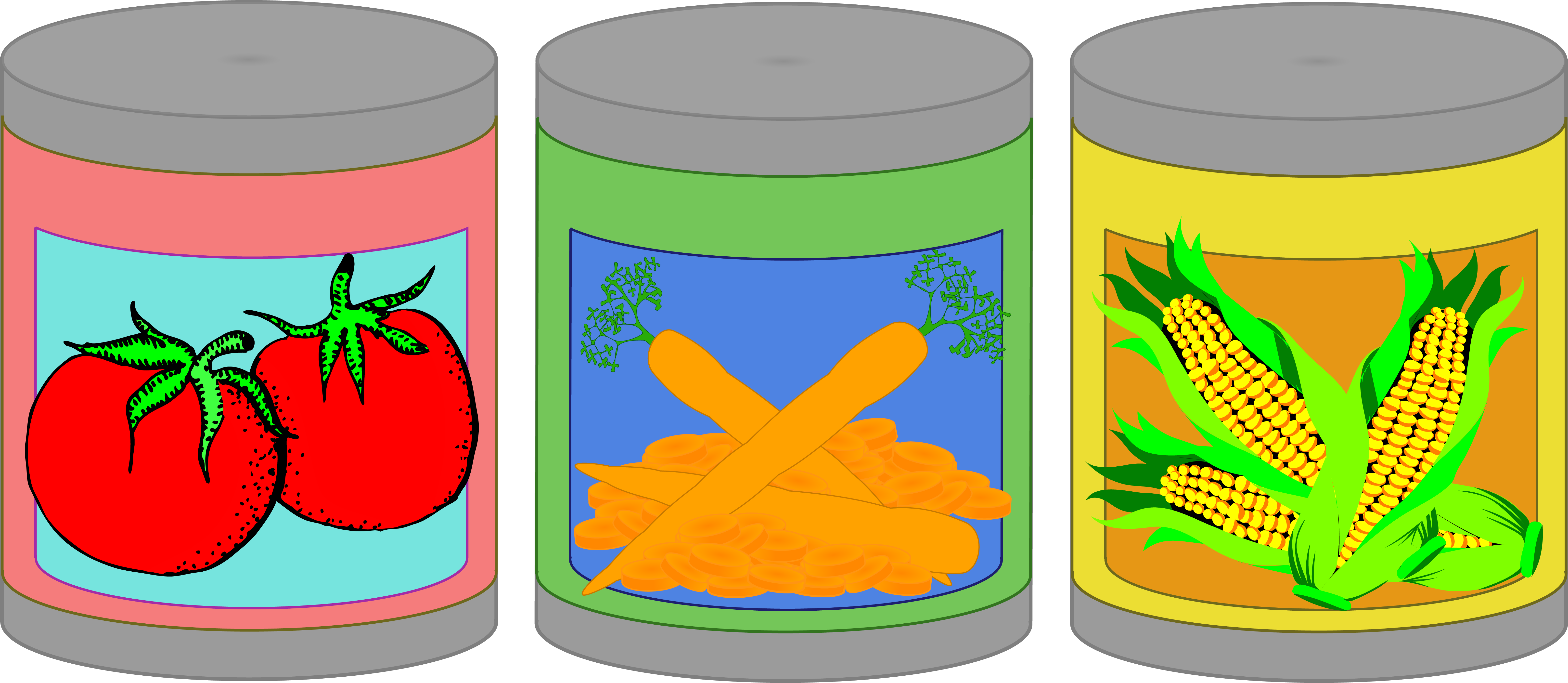

Recently, Sven decided to start exercising at home instead of going to the gym. He does not have the nice weights that they have at the gym, but he does have different containers of food that he can use as weights. Sven has containers of soup, beans, breadcrumbs, jam, and peanuts. He also has one can whose label fell off that he calls the Mystery Can.
Sven used his balance scale and came up with the following discoveries:
Two cans of soup have the same mass as one can of beans.
Five containers of breadcrumbs have the same mass as one jar of jam.
One can of beans and two containers of bread crumbs together have the same mass as the container of peanuts.
The Mystery Can and one can of soup together have the same mass as the container of peanuts.
Sven’s friend, Rob, who has perfect estimation skills, determined that the Mystery Can has a mass of \(580\) grams and the can of beans has a mass of \(640\) grams. Assuming that Rob is correct, determine the mass of each container, in grams. To do so, you may find it helpful to set up algebraic equations to show the relationships among the cans’ masses.

First we will write algebraic equations to show the relationships given by Sven’s four discoveries.
To avoid a lot of writing, we will use the following variables: \(S\) represents the mass, in grams, of one can of soup, \(P\) represents the mass, in grams, of one container of peanuts, \(B\) represents the mass, in grams, of one can of beans, \(C\) represents the mass, in grams, of one container of breadcrumbs, \(J\) represents the mass, in grams, of one jar of jam, and \(M\) represents the mass, in grams, of the Mystery Can.
Now we can write an equation for each of Sven’s four discoveries.
\(2\times S = B\)
\(5\times C = J\)
\(B+2\times C = P\)
\(M+S = P\)
We are given a mass of \(640\) grams for one can of beans. Thus the first equation tells us that \(2\times S = 640\). Since \(2\times 320=640\), we can conclude that \(S = 320\).
We are also given that the mass of the Mystery Can is \(580\) grams. Using the fourth equation we get \(M+S=580+320=900\). Therefore \(P=900\).
Using the third equation we get \(640+2\times C = 900\). Subtracting \(640\) from both sides of this equation gives us \(2\times C = 260\). Since \(2\times 130=260\), it follows that \(C=130\).
Finally, using the second equation we get \(5\times 130=J\). Thus \(J=650\).
Therefore, the mass of each container is as follows.
| Container | Mass (grams) |
|---|---|
| can of soup | \(320\) |
| container of peanuts | \(900\) |
| container of breadcrumbs | \(130\) |
| jar of jam | \(650\) |